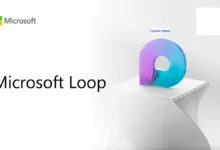
Fintech 2023, the fintech sector will continue to develop and change. The fintech industry is expected to grow and reach $174 billion in 2023.
As users become more tech-savvy, the banking sector has recently seen a huge increase in the adoption of fintech solutions. A number of technological trends, including SaaS services and embedded finance, will influence the fintech sector in 2023.
87% is a fantastic start to the year, especially for the Indian fintech sector. This figure represents the rate at which Indian consumers are embracing fintech products, outpacing the global average by 23%.
India now has more than 2100 fintech companies, making it the third-largest provider of fintech services in the world, supported by the government’s active regulations and sound regulatory environment. All thanks to the young businesses that were founded within the last five years, which make up 67% of all fintech businesses in India.
Pay Later Market is Expanding
There will be much more clarity for the pay-later category, which has received its fair share of scrutiny, on the back of anticipated regulations in 2023. On the other hand, customers will become much more confident in using small amounts of credit, allowing pay-later businesses to move forward with more assurance.
Pay-later fintech companies will be better and more widely able to provide credit to underserved customers by 2023. This will make the category more popular and be viewed as a good alternative by the general public.
Customers will be able to track their spending in real-time as more businesses adopt cashless payment methods, giving them more control over their finances. Businesses will also profit from cheaper transactions, quicker transactions, and reduced fraud risk.
SaaS
Another hot trend to look out for in 2023 is SaaS (software as a service). The SaaS industry is reportedly moving in the right direction and will reach the $623 billion milestone in 2023 at a compound annual growth rate of 18%, according to reports.
Businesses can use SaaS services to access and pay for cloud-hosted software applications without having to install them on their servers or computers.
As a result, businesses can concentrate their resources on creating better customer experiences by eliminating many related overhead costs.
In addition, SaaS offers access to robust tools with improved security protocols for data management and storage that would be challenging or costly for individual firms to implement on their own.
Introducing the Digital Rupee
By introducing its first pilot of the digital rupee in November 2022, India has advanced its digital transformation efforts significantly. Future financial transactions and the very nature of commerce will change as a result of the development of the digital rupee. For beginners, the digital rupee is more than just a form of money. It’s an entire ecosystem made to increase accessibility and convenience of financial transactions for everyone.
In other words, you can use your smartphone or computer to complete transactions without a bank account or credit card. The Fintech industry has a lot to look forward to as digital tokens enable quicker disbursements and ensure the security of digital payments and online money transfers.
Also Read | Stackwell, A Fintech Platform, Redefines The Concept Of Black Wealth
API Integration for Open Banking
A rising trend is open banking, which enables open application programming interfaces, also known as APIs, for third-party service providers to access customer data. Market competition, innovation, and transparency may all be boosted by it.
Financial firms can provide better products and more individualised services by sharing customer information with outside providers. The ability to access multiple financial services through a single platform allows customers to enjoy a more smooth banking experience.
The adoption of open banking and API integration by financial institutions to enhance their customer offerings is something we can anticipate increasing in 2023. A single platform that combines payment services, investment platforms, and budgeting tools is one example of how to do this.
Blockchain and DeFi Are Back
We can anticipate a greater variety of innovations as the DeFi ecosystem in India expands. For instance, we might observe the creation of fresh DeFi apps that are customised to the requirements of India’s unbanked population. These applications may offer access to financial products like insurance and microlending, bridging the gap between the traditional financial system and those who have been shut out of it.
Future predictions indicate that the Indian decentralised finance and blockchain ecosystem will continue to expand and innovate. We might witness the development of new economic models that upend conventional ideas of finance and trade as more entrepreneurs and businesses investigate the potential of these technologies.
IoT
With the help of the internet of things (IoT), physical devices can gather data, analyse it, and take action without any human involvement. IoT has greatly improved banking’s security, effectiveness, and convenience, with significant implications for the fintech industry.
Banks can use sensors built into their products to track customer activity and automate responses based on predefined preferences or behaviors, such as automatic payments triggered by modifications in a customer’s spending habits or fraud detection algorithms.
Voice recognition technology is also being used for authentication, which simplifies login procedures and boosts security by making accounts difficult to hack.
Neobanking will sharpen its focus.
It makes sense that Neobanks will keep growing given the enormous growth they experienced during the pandemic years both globally and in India. Neobanks will create hyper-targeted products and services in 2023 that target a variety of market segments, including those who are new to credit, students, retirees, salaried women, and more. They will do this by utilising their extensive customer knowledge and access to data.
Bottom Line
Future progress will be accelerated by fintech. By 2023–2024, we can anticipate seeing more blockchain, AI, and IoT applications in financial transactions. Integration and automation will advance in complexity. Customers will consequently have access to more specialized services that better meet their unique needs. Companies need to stay ahead of the curve if they don’t want to fall behind as technological advancement continues to shape the finance industry.
Also Read | The Top 10 Low Investment Startups Ideas








